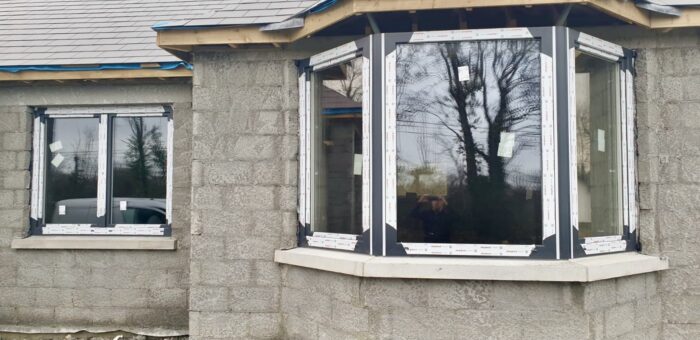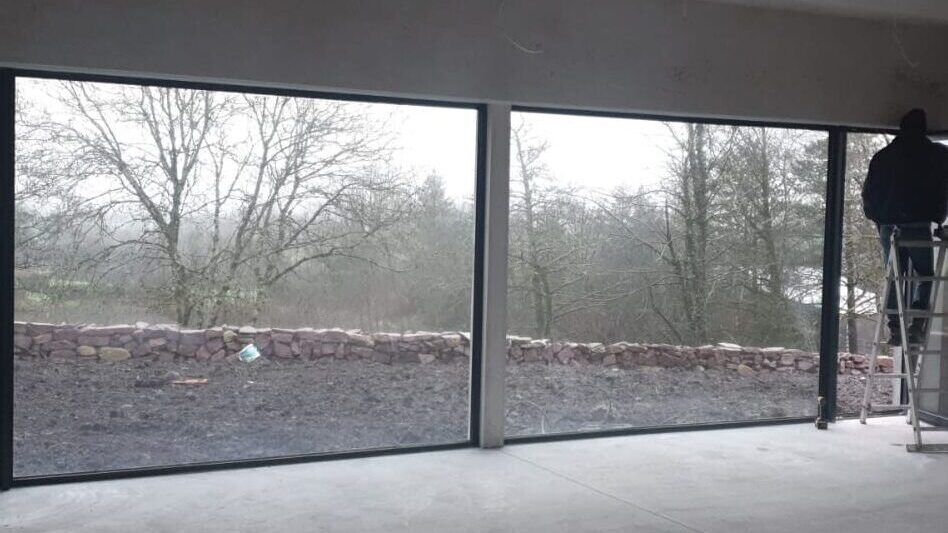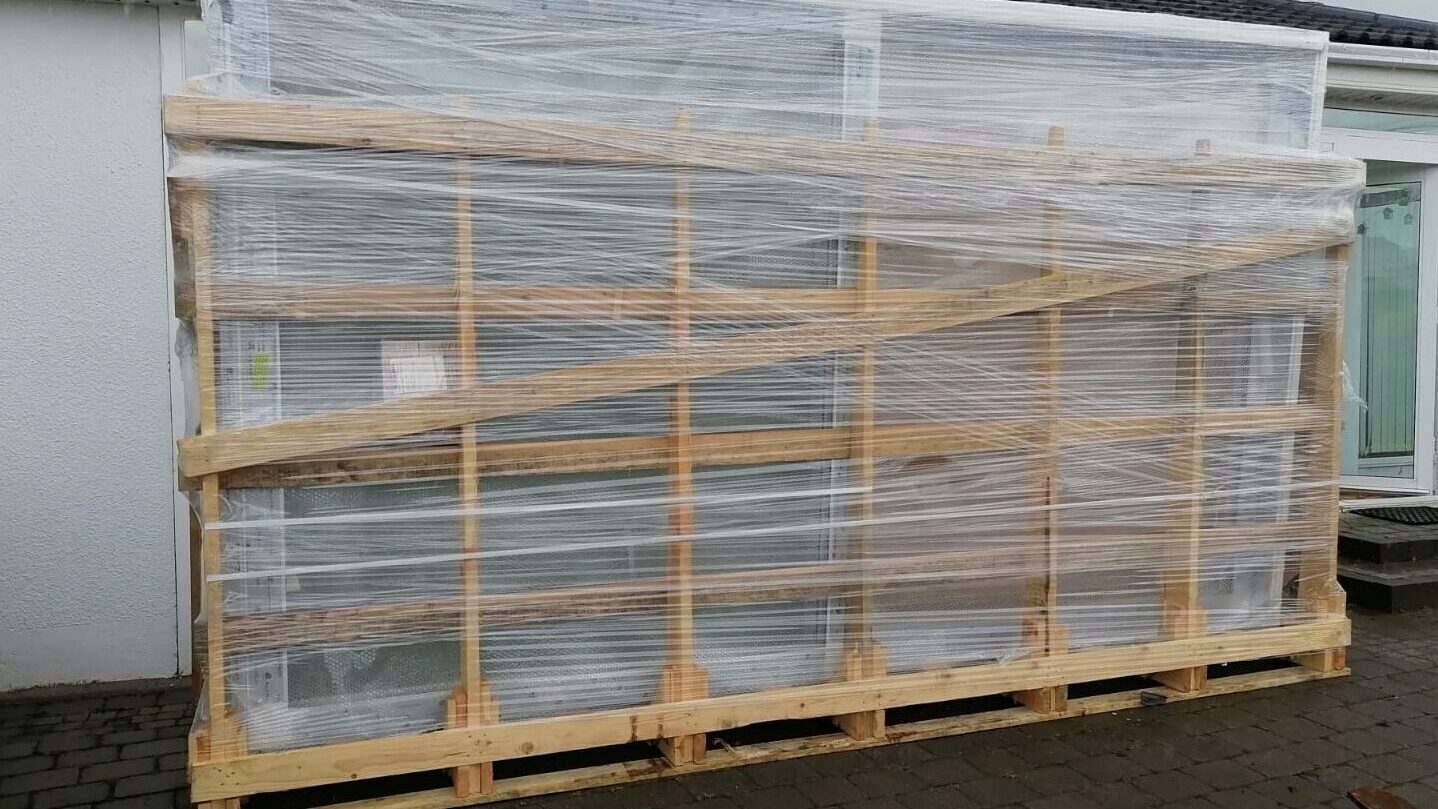When purchasing a window, you generally think of the product type you want—if it’s a casement, tilt and turn or a sliding one. You also consider the material, colour and maybe even the way window’s aesthetics complement the architectural style of your home. Unfortunately, very little consideration is given to the glass panes themselves. And in fact, it should be one of the most important factors affecting your window selection process. It is highly important that the new windows provide you with a high visual quality of glass panes, isn’t it? That’s why we have decided to share information about the inherent material properties of glass and the way many different processes affect the appearance of the installed product.
The following guide is to teach you how to properly inspect the glass panes for the occurrence of possible workmanship defects. It is intended to help with answering many frequently asked questions which come to mind before, during and after the installation of your windows. We will try to explain the most essential assessment standards as well as issues suggesting you should contact your supplier / installer. Let’s get started!
What is an insulated glass unit (IGU)?
An insulated glass unit (IGU) is a system consisting of two or more (three to four) glass panes, separated along their edges with one or more glass spacers. An IGU is primarily applied in structures where the edges are protected against direct ultraviolet (UV) radiation. If the use of glass panes does not provide for such protection, it is required to clearly indicate it when ordering. In such a case, another type of seal, namely silicone, is required to build the glass – in order to ensure the basic glass properties.


Each insulated glass unit is marked with an imprint on the spacer frame. The labelling includes: CE marking, production date and time, manufacturer’s designation [EO], size, glass construction, order number, lot number and item. Additionally, the marking of toughened safety glass contains the manufacturer’s designation and the number of the EN 12150 standard (and is printed on the glass surface in the corner or on the edge of the glass).
Check the mandatory requirements for the production process
The quality that should be expected from your windows and insulated glazed units is set by the European Standard EN 1279. It is a master governing standard which specifies the mandatory requirements for the production process – in compliance with European Harmonised Standards (called in short hENs) providing the visual inspection criteria for insulated glass units (IGU) and single panes (being the components of IGU). The latter include: hEN 572 – float glass, hEN 1096 – coated glass, hEN 12150 – tempered glass and hEN 12543 / 14449 – laminated safety glass.
However, please note that the natural properties of the glass material and many different processes that the glass undergoes in order to achieve the target functional characteristics, may sometimes influence the appearance of the installed product.
Perform visual inspection
Look at the IGU in the vertical plane at the right angle (90°) from the inside of the inspection room. Stand at a distance of 2 metres from the controlled IGU. Perform the window pane inspection in natural daylight, but remember that the IGU should not be exposed to direct sunlight. Do not use any strong artificial light sources (e.g. torches or halogen lamps). The glass pane must be completely dry.

When performing the visual inspection, you have to look through the IGU, not at it. Possible defects of the glass pane should be noticed within 20 seconds. If the defect is not visible when looking through the IGU from the specified distance, or if the defect is noticed after at that time, such a defect is then considered not conspicuous or not bothering the viewer. Such defects shall not be qualified as the unacceptable ones.
Pay attention to the distortion of reflected image
The hermetically sealed space between the panes contains a fixed volume of air /gas, dictated by the temperature and atmospheric pressure values prevailing at the time of joining. After installing IGUs, changes in the outside temperature and pressure will result in an increase or decrease in the volume of air / gas in the space between the glass panes. This, in turn, will cause the glass pane to bend visible as a distorted reflection image. However, this distortion indicates that the IGUs have been properly sealed and proves their gas tightness. This not a sign of IGU defect.

Tempered glass pane may show some visual and colour distortions. Still, such surface colours and patterns do not indicate a change in the physical properties of the glass and are not indicative of a defect. The refraction of light on the IGU may cause slight temporary rainbow effects. They appear due to the parallel alignment of high-quality flat glass panes to each other, as well as the different orientation of the tempered glass.
Generally, it is worth to remember that the glazing technology is constantly evolving, so new glass panes installed next to older panes will not have to match them perfectly. This situation is not due to a defect in the IGU either.
Assess workmanship of glass spacers
It is assumed that the visible gap in between the glass spacer joints (both on the sides and at the corners) should not exceed 1 mm. In modelled glass panes (including curved glass panes), the maximum gap in between the glass spacer joints shall be 2 mm. When it comes to lateral undulation and concavity of the glass spacers, they are permitted and treated as a result of the glass spacer bending process.

In order to check glass spacers for defects, you should visually inspect them by following the same procedure for as for assembled IGU above. Here, the inspection distance should also be 2 m. All the scratches, impurities, stains, finger marks, streaks, etc. which are not visible by visual inspection from 2-m distance, should not be qualified as unacceptable defects.
Inspect for water condensation
There are two possible locations of water condensation occurrence: on the outer/indoor side of the IGU surface and within it. In the first case, water condensation appears on the outer IGU surface when highly humid air touches the colder glass surface. In contact with the glass, the air cools down and releases the excessive water vapour on the surface. When it comes to water condensation appearing on the indoor side of the IGU, that’s the sign your room has a high relative humidity. This indicates a problem in the construction of the building itself and the need for better air ventilation. In other words, water condensation on the surface of the IGU is a symptom and not a defect.
Nonetheless, the situation is quite the opposite when water condensation appears within an IGU – namely, on the inside surfaces of the glass panes. It may mean that the IGU has lost its gas-tightness. This is a defect which qualifies the IGU for replacement.
Compare colour differences
Each glass pane features its own specific colour and its tone depends on many factors, such as the input materials, melting process parameters, manufacturers, production lots, type of coating, glass thickness or an angle of observation. It happens that even glass panes adjacent to one another show differences in the visual effect. This can be caused by dissimilarities in the IGU structure or different times of glass pane production – so simply the fact that the IGU panes come from different production lots. It’s completely normal that with time, the surface of any IGU gets influenced by weather conditions and changes its appearance. That’s why these phenomena should not be qualified as IGU defects.
Look for glass breaks
Last but not least: visible external failures. Generally, all glass breaks or fails result from mechanical or thermal inputs, such as impact against the glass surface, edge or corner, wind pressure, adhesive decorations, proximity of heaters or A/C units and high exposure to sunlight.

Unfortunately, all the defects on the outer surface of the products that may arise and appear outside the manufacturer’s plant are not subject to warranty and complaint.
Conclusion
We hope you find our mini guide on how to perform the professional IGU check useful! We have put together all this information in order for you to be able to assess the quality of your glass panes and know what to expect when you do so. However, remember that our guide is to serve only as guidance and the general criteria for inspecting the IGUs installed in your windows or doors.
If you have any concerns regarding specific glass characteristics, you should contact a professional having expertise in the glazing field. They would evaluate your glass panes using the appropriate specification. You can always contact our Fenbro sales team for more advice and support at: https://fenbro.com/contact/.